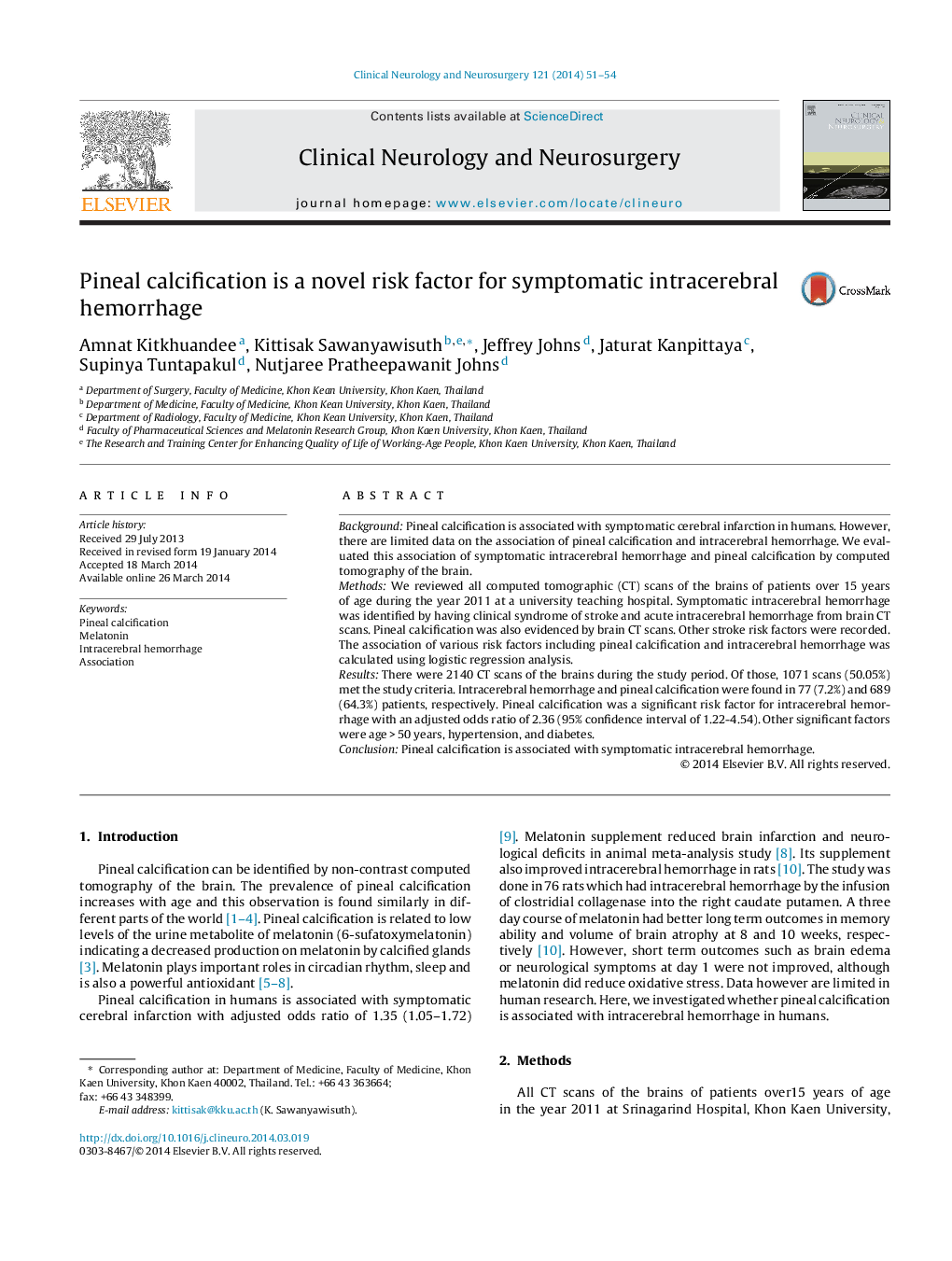| Article ID | Journal | Published Year | Pages | File Type |
|---|---|---|---|---|
| 3040329 | Clinical Neurology and Neurosurgery | 2014 | 4 Pages |
BackgroundPineal calcification is associated with symptomatic cerebral infarction in humans. However, there are limited data on the association of pineal calcification and intracerebral hemorrhage. We evaluated this association of symptomatic intracerebral hemorrhage and pineal calcification by computed tomography of the brain.MethodsWe reviewed all computed tomographic (CT) scans of the brains of patients over 15 years of age during the year 2011 at a university teaching hospital. Symptomatic intracerebral hemorrhage was identified by having clinical syndrome of stroke and acute intracerebral hemorrhage from brain CT scans. Pineal calcification was also evidenced by brain CT scans. Other stroke risk factors were recorded. The association of various risk factors including pineal calcification and intracerebral hemorrhage was calculated using logistic regression analysis.ResultsThere were 2140 CT scans of the brains during the study period. Of those, 1071 scans (50.05%) met the study criteria. Intracerebral hemorrhage and pineal calcification were found in 77 (7.2%) and 689 (64.3%) patients, respectively. Pineal calcification was a significant risk factor for intracerebral hemorrhage with an adjusted odds ratio of 2.36 (95% confidence interval of 1.22-4.54). Other significant factors were age > 50 years, hypertension, and diabetes.ConclusionPineal calcification is associated with symptomatic intracerebral hemorrhage.
